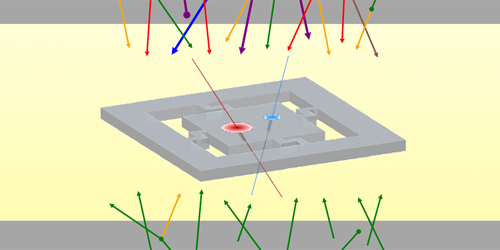Quantifying the Background Radiation Hitting Superconducting Qubits
Classical computers have a well-known vulnerability to background radiation such as that produced by cosmic rays, which can cause undesired bit flips. Superconducting quantum computers, with their delicate quantum states, are even more sensitive: An energetic particle or photon need only strike the computer’s substrate to cause multiple qubits to lose coherence. To understand the impact of this effect, Joseph Fowler at the National Institute of Standards and Technology in Colorado and colleagues have used a detector resembling a quantum circuit to characterize the spectrum of naturally occurring background radiation in the circuit’s environment [1].
A superconducting quantum circuit is typically formed from a few-hundred-nanometer-thick film. This film presents a small target for photons and energetic particles, which are far more likely to strike the thick underlying substrate. But the energy deposited in the substrate can generate particles that propagate to the superconducting layer, where they can break up the superconducting electron pairs and cause the qubits to decohere.
Fowler and colleagues used a radiation model to predict the effect of both cosmic and terrestrial radiation sources on a circuit. They then validated this model with measurements made using thermal kinetic-inductance detectors (TKIDs). A TKID measures the energy of incoming particles through their effect on the inductance of a superconductor, which changes because of the breakup of electron pairs—the same phenomenon causing decoherence in a superconducting qubit. By fabricating their TKIDs on substrates similar to those used in quantum circuits, they determined the rate of energy deposition in a typical device, finding good agreement with the model’s predictions. The validated model will guide researchers in the design of quantum computers that are less sensitive to background radiation, the researchers say.
–Marric Stephens
Marric Stephens is a Corresponding Editor for Physics Magazine based in Bristol, UK.
References
- J. W. Fowler et al., “Spectroscopic measurements and models of energy deposition in the substrate of quantum circuits by natural ionizing radiation,” PRX Quantum 5, 040323 (2024).




